In 1967, astronomer Jocelyn Bell Burnell (1943–) discovered the first pulsars — cosmic lighthouses that now enable astrophysicists to probe extreme physics and test general relativity.
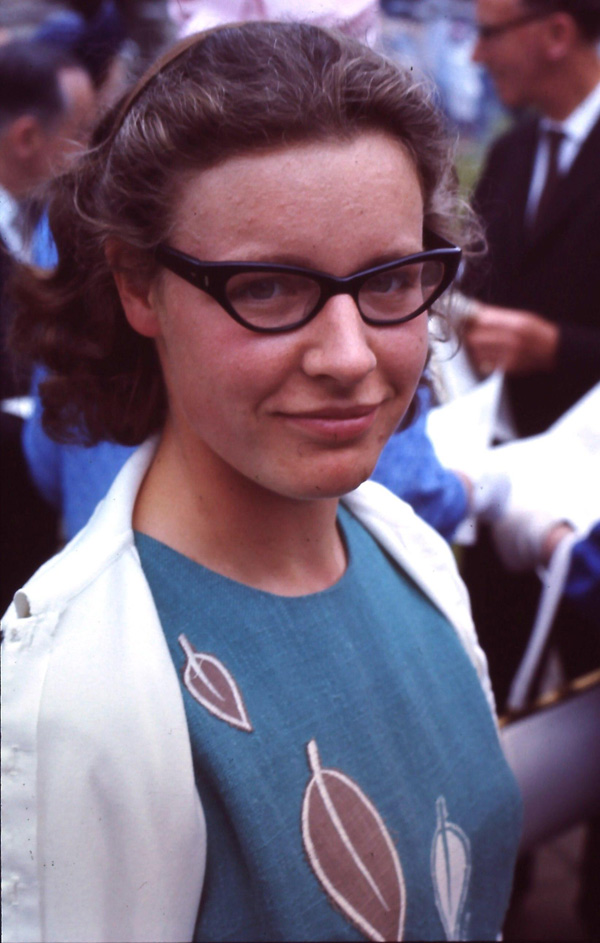
Roger W Haworth / CC BY-SA 2.0
“I was about 14 years old when my father brought home an astronomy book from the public library by Fred Hoyle called Frontiers of Astronomy,” recalls Jocelyn Bell Burnell. “It was quite a tough read for a 14-year-old, but I took it up to my room and read it from cover to cover — I was hooked.”
From those humble beginnings, Bell Burnell went on to observe radio waves from pulsars for the first time in history, making one of the most significant astronomical discoveries of the 20th century.
Rising Career
Bell Burnell had her first taste of what a career in astronomy would entail when she went to the Armagh Observatory, just down the road from her family home in Lurgan, Northern Ireland. She visited multiple times with her father, an architect who designed the Armagh Planetarium. But although these trips provided a window into one type of astronomy, it was one that Bell Burnell ultimately decided not to pursue: “To be an optical astronomer you have to work at night — and I need my sleep,” she quips.
Instead, when Bell Burnell had completed her Bachelor of Science degree in physics at the University of Glasgow in 1965, she chose to specialize in radio astronomy. The field was only a few decades old and still in its infancy — ripe with the promise of discovery. Under the guidance of Antony Hewish at the University of Cambridge, she studied quasars, brilliant but unknown sources of radiation visible from across the universe. Now they are known to be gas-guzzling supermassive black holes, but at the time only 20 quasars had been discovered. So Bell Burnell set about finding more of them, in order to have a big enough sample to decipher their origin and makeup.
First, though, she had to help build the radio telescope that would detect them. The instrument would consist of copper wires and cables supported by some 2,000 wooden poles. Two years of grueling manual labor later, the Interplanetary Scintillation Array was complete, and she could get down to work.
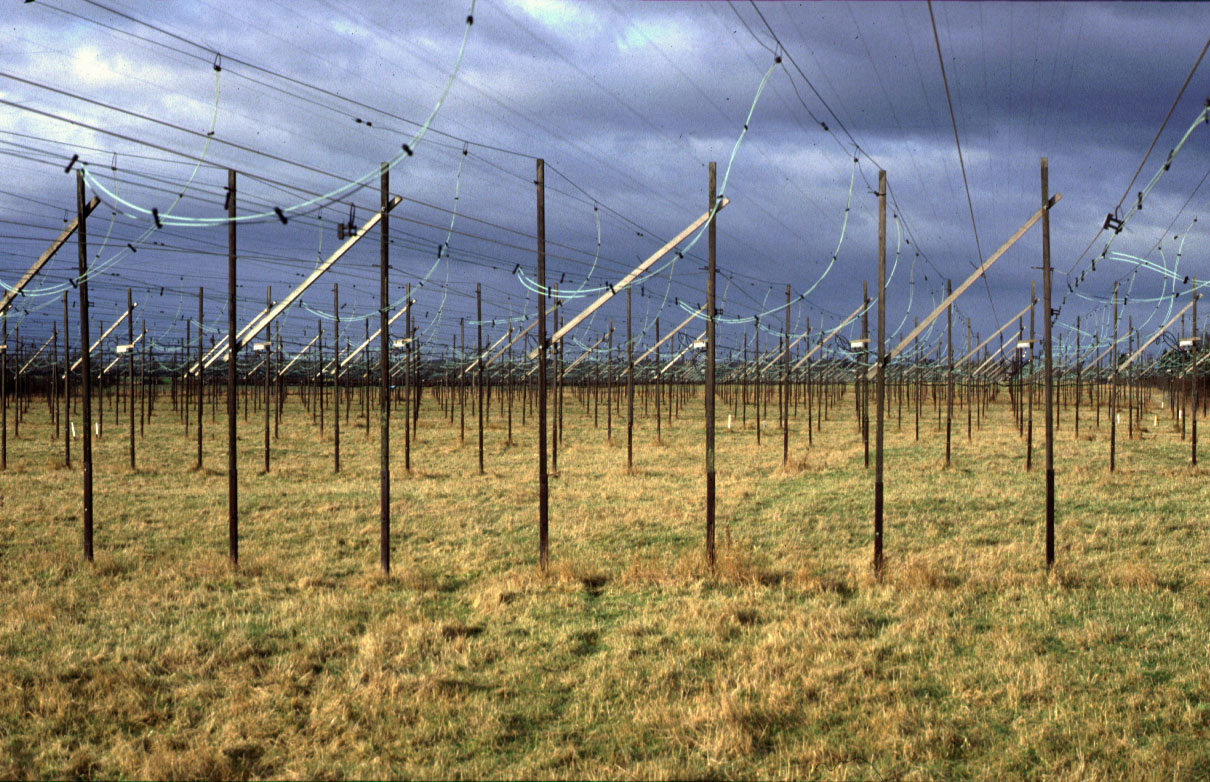
Jocelyn Bell Burnell
The First Pulsar
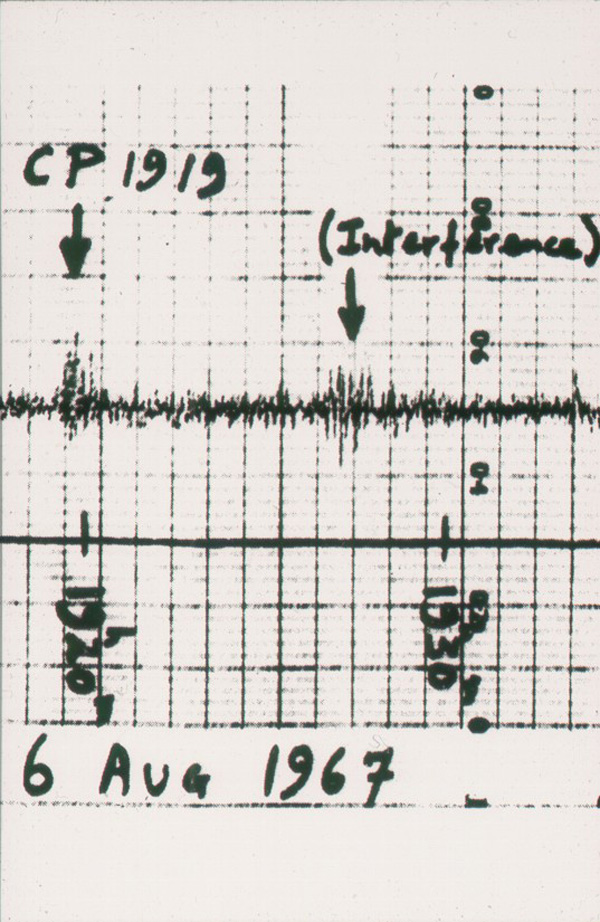
Jocelyn Bell Burnell
Bell Burnell immediately discovered an abundance of quasars. But then, on August 6, 1967, she noticed an odd squiggly stretch of data occupying about 5 millimeters in the 500 meters of paper readouts. She logged it and moved on. Yet in the days and weeks that followed, the squiggle occasionally reappeared. After a month of observations, she finally saw that the squiggle represented a pulse of radio waves.
Bell Burnell was starting to think she had exposed a cosmic mystery, but when she reported her results to Hewish, she was met with a healthy dose of skepticism.
“His first reaction was that it was manmade,” she recalls. “He came out to the observatory the next day at the appropriate time and saw [it] with his own eyes and began to believe much more that this was not terrestrial — that it was moving with the stars.”
Over the next few weeks, Bell Burnell and Hewish studied the signal in detail, discounting alternative sources such as satellite interference and equipment flaws. During this time, Bell Burnell discovered three more rapidly pulsating radio sources in other parts of the sky. She cataloged them with the letters “LGM,” for little green men, although neither she nor Hewish ever genuinely entertained the possibility that the signals came from alien life. “It wasn’t serious” she says. “You needed a shorthand, as you couldn’t forever be referring to it as ‘that funny pulsing source at 19h 19m, declination 23.’”
But if not little green men, then what was producing these peculiar signals? The first pulsing source, then designated LGM-1 (now known as PSR B1919+21), had a heartbeat that lasted only 0.3 seconds. Its rapid rise and fall time meant the source had to be small, only a tenth of a light-second across. Also, because the pulse repeated every 1.337 seconds with extreme regularity, the source had to have great reserves of energy.
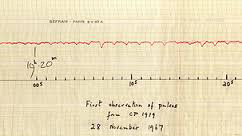
Courtesy of Mullard Radio Astronomy Observatory
“Originally, we were very puzzled because we were saying it’s small and it’s big,” Bell Burnell explains. “But we soon realized that what we were actually saying is that it’s small in size and big in mass — hence, a neutron star or a white dwarf.”
Together with Hewish and others, Bell Burnell published the results in the February 24, 1968, Nature, tentatively explaining “this strange new class of radio source” as “the stable oscillations of white dwarf or neutron stars.”
In December the same year, a separate team discovered another pulsar in the Crab Nebula, the visible remnant of a supernova explosion that Chinese and Middle Eastern astronomers had witnessed in 1054 AD. Later, astronomers measured this source to have a pulse period of 0.033 seconds. Whether rotating, vibrating, or in a binary orbit, white dwarfs simply do not have the density to produce such fast pulse periods.
Astronomers also found that the pulse period was lengthening by as much as 36 nanoseconds per day, a tell-tale sign of a rotating object gradually shedding energy. (If the radio waves had instead come from a vibrating object, the pulse period would have shrunk over time, losing amplitude as the object loses energy, much like a bouncing rubber ball.) Together, these insights provided strong evidence that pulsars are rapidly rotating neutron stars that emit beams of radio waves. These beams sweep over Earth, producing pulses that correspond to the neutron star’s rotation.
Honors and Legacy
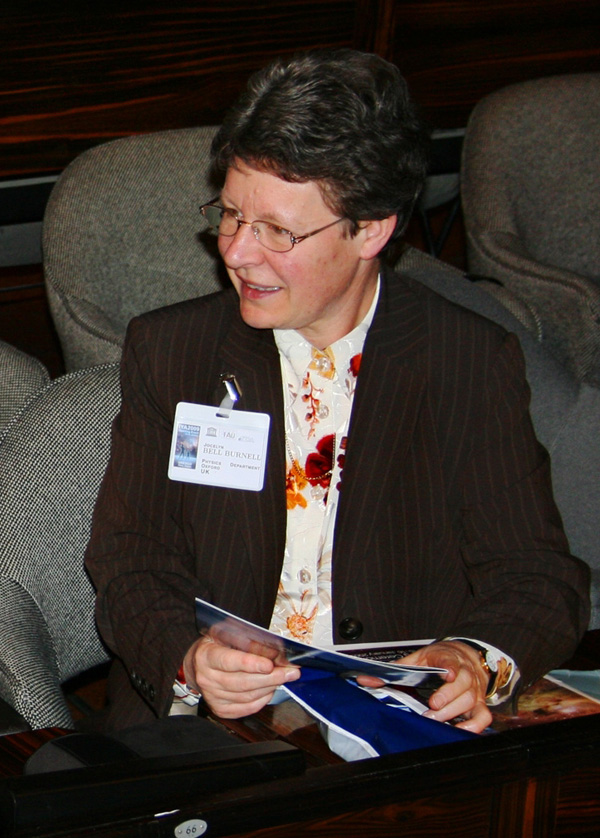
Astronomical Institute, Academy of Sciences of the Czech Republic
The Royal Swedish Academy of Sciences recognized the discovery of pulsars by awarding Hewish the 1974 Nobel Prize in Physics — but not Bell Burnell. Although she never complained about her omission, the author of the book that first inspired her to become an astronomer, Fred Hoyle, did. His sharp and public criticism of the Nobel decision is thought to have later contributed to his own omission from the 1983 Nobel Prize in Physics, which was instead awarded to his collaborator William Fowler for fundamental insights into stellar nucleosynthesis.
While all of this was happening, Bell Burnell’s career should have been taking off. Instead, societal conventions of 1960s and 1970s Britain stymied her studies. “I got married just as I finished my PhD and had a child fairly soon after that,” she says. “I then spent about 20 years picking up part-time work in any kind of astronomy, near where my husband was working.”
Despite, or perhaps because of the adversity she faced in astronomy, Bell Burnell has succeeded in recent decades in building a new career that focuses on increasing the diversity of scientists and supporting students facing adversity.
In 2005, she was part of a group of senior female scientists who launched the Athena SWAN Charter, which encourages and recognizes commitment to advancing the careers of female scientists. And in 2018, Bell Burnell received the $3 million Special Breakthrough Prize in Fundamental Physics for her pulsar research, as well as a lifetime of inspiring leadership in the scientific community. Typical of her generous character, she donated the entire prize to the Institute of Physics, funding PhD studentships for underrepresented figures, including women, refugees, and ethnic minorities.
 4
4
Comments
Eric Rachut
December 13, 2019 at 4:58 pm
I also remember Fred Hoyle's Frontiers of Astronomy from when I was a kid. He was known for derisively naming and condemning the Big Bang theory and for being an atheist (in his view, these positions were related).
You must be logged in to post a comment.
Paul-Dawson
December 13, 2019 at 5:10 pm
Professor Bell Burnell has acted with exemplary grace and charm in respect of the Nobel omission. Whilst I've always assumed that Hoyle's intervention was undertaken in good faith, one cannot avoid the fact that he and Hewish were on the very worst of terms. Omitting Bell Burnall may have been sexist, or perhaps it was because she was a student. Omitting Hoyle was simply spiteful.
You must be logged in to post a comment.
brians238
March 10, 2022 at 9:24 am
Agree 100% with your assessment of Prof. Bell Burnell and the omission of Hoyle. The Nobel was awarded for antenna design (for radio aperture synthesis--which was Hewish's achievement), not for the discovery of pulsars. In addition, awards are usually made to the Principal Investigator of a project (the paper listed 5 authors, will Hewish first and Bell second) Prof. Bell Burnell recognized this in comments she has made ("it would demean Nobel Prizes if they were awarded to research students, except in very exceptional cases, and I do not believe this is one of them"). She has, indeed, "acted with exemplary grace and charm."
You must be logged in to post a comment.
Monica Young
March 10, 2022 at 2:22 pm
See the Nobel Prize summary here: https://www.nobelprize.org/prizes/physics/1974/
"The Nobel Prize in Physics 1974 was awarded jointly to Sir Martin Ryle and Antony Hewish "for their pioneering research in radio astrophysics: Ryle for his observations and inventions, in particular of the aperture synthesis technique, and Hewish for his decisive role in the discovery of pulsars." (bolding mine)
You must be logged in to post a comment.
You must be logged in to post a comment.